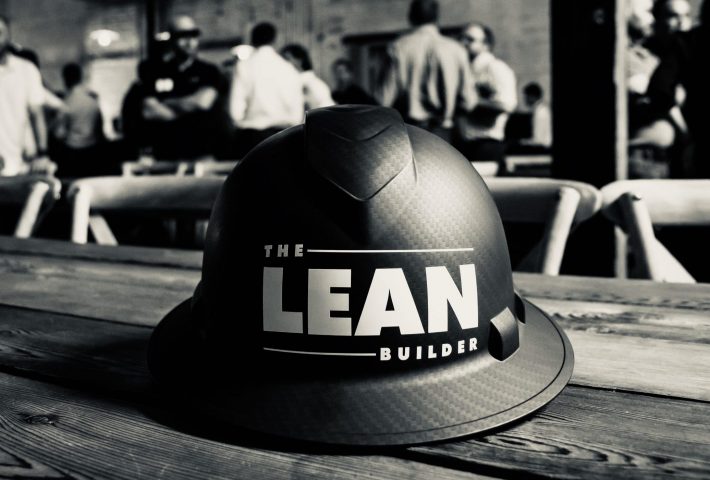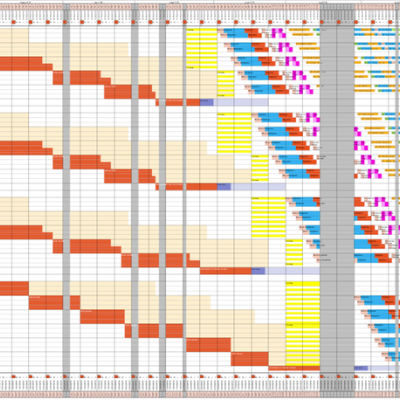Warren Buffet once said, “Investing is simple, but not easy.” I feel the same way about Lean construction. I have seen many builders look at the tools and behaviors of Lean building and say, “Oh I already do that, that’s common sense,” but then struggle to consistently put the tools and behaviors in place. I’ve seen builders take the leap of faith—first starting by transforming their jobsite with a daily huddle, utilizing visual communication tools, managing constraints with a constraint board, and finally running the Last Planner System™—but when things start to go awry they completely abandon all that hard work and go back to what is familiar.
But why does this happen?
I struggled with this question until I read James Clear’s New York Times bestselling book Atomic Habits, wherein he shares the concept of what he calls “Identity-Based Habits.” Clear states that your current behaviors are simply a reflection of your current identity, and the key to building lasting habits is by focusing on creating a new identity first and start believing these new things about yourself. An example given in the book is the difference between two smokers who are trying to quit cigarettes. In the scenario when the first smoker is offered a cigarette his response is “No thanks, I’m trying to quit smoking,” but when the second smoker is asked the same question, his response is “No thanks, I don’t smoke.” The second smoker has begun to shift his identity to that of a non-smoker.
This was the epiphany I had been hoping for. To become a Lean Builder, you must change your identity. Here’s how you can apply the principles of Identity-Based Habits to achieve that.
According to Clear, there are three layers of behavior change: a change in your outcomes, a change in your processes, a change in your identity.
Changing your outcomes: “Outcomes are about what you get.”
Most builders come to Lean construction because they are tired of their current state: 60 + hour work weeks, rework, trades working against each other in the field, etc. Changing your outcomes is concerned with changing your results: working less hours, having more fun at work, increasing productivity, finishing the project ahead of schedule. Most of the goals you set are associated with this level of change.
Changing your process: “Processes are about what you do.”
This level is concerned with changing your habits and systems. Going from a weekly trade meeting to a daily huddle, issuing a weekly six-week look-ahead, and keeping track of commitments by using percent plan complete are just some process changes that must be implemented for Lean building. Most of the habits you build are associated with this level.
Changing your identity: “Identity is about what you believe.”
Clear writes that “this level is concerned with changing your beliefs, your worldview, your self-image, and judgments about yourself and others.” This is where the magic happens! A major component about Lean is “respect for people,” and one could say all the tools tie back to this. At this stage, you truly must believe that you are a Lean Builder.
The problem is many builders begin the process of changing their habits by focusing on what they want to achieve (“outcome-based habits”) instead of who they wish to become (“identity-based habits”).
So, how do you change your beliefs?
Step 1 – Decide what type of builder you want to be.
Step 2 – Prove it to yourself with baby steps and small wins.
A Lean Builder believes in respect for the individual. A Lean Builder believes in waste reduction and value creation. A Lean Builder seeks flow of work and looks to optimize the whole. Finally, a Lean Builder believes in continuous improvement. Here’s how to get there.
Identity: Become a builder that recognizes and shows appreciation for the value of each trade partner brings to the team.
Baby step: Get to know your foremen and look for ways for them to get to know each other. This could be over beers after work or putting a picnic table outside the trailer and inviting the guys to come sit and eat over lunch.
Baby step: Look to celebrate successes. If someone pulls a late shift or puts in high quality work, give them a shout out in front of the team.
Identity: Become a builder who seeks out waste (waste is defined as anything that does not add value) and works to eliminate it, who empowers others to minimize waste, and who works smarter; not harder.
Baby Step: Study The Eight Wastes.
Baby Step: Make an Eight Wastes board and post it in your jobsite trailer.
Baby Step: Use your daily huddles as an opportunity to teach about the wastes (how to identify them, and how to remove or mitigate them).
Identity: Become a builder that seeks to understand value from the client’s perspective, who recognizes that what a client values may be deeper than or different from what is in the plans or specs.
Baby Step: Before your project starts, have a True North (also known as Conditions of Satisfaction) meeting. Ask your client, architect, engineers, and end users (if able) how they define success. Capture these goals and work with the team to build measurable leading and lagging indicators to ensure the goals are being met and value is being created.
Identity: Become a builder who only puts work in place “just in time” vs. whenever it becomes available, and who understands the difference between pushing a schedule and pulling a schedule.
Baby Step: Have a hand-off work planning session. Choose an upcoming milestone on the project and ask your trade foremen what deliverables must be created to achieve this milestone. Have them discuss as a team and capture the workflow on sticky notes. Work forwards or backwards to sequence the activities involved to meet the milestone. As you progress, this is the baby step needed to be ready for pull planning.
Identity: Become a builder who learns through retrospection and strives to continuously improve.
Baby Step: Implement plus/delta at the end of each meeting. (Plus: what brought value and how does the team repeat it? Delta: what can the team change or add to bring more value? How can the team do better?) Document them and use them to create change at the next meeting.
Like Lean, change is a process. You have already taken the first step by reading this blog—because this behavior indicates that you are a builder who wants to grow and evolve their thinking. All you need to do now is pick something from this list and make it happen.
If you have comments or any suggestions you’d like to add, we hope you’ll comment below on and share what’s working. We’d love to hear from you. For more field-based ideas, please visit The Lean Builder website.




